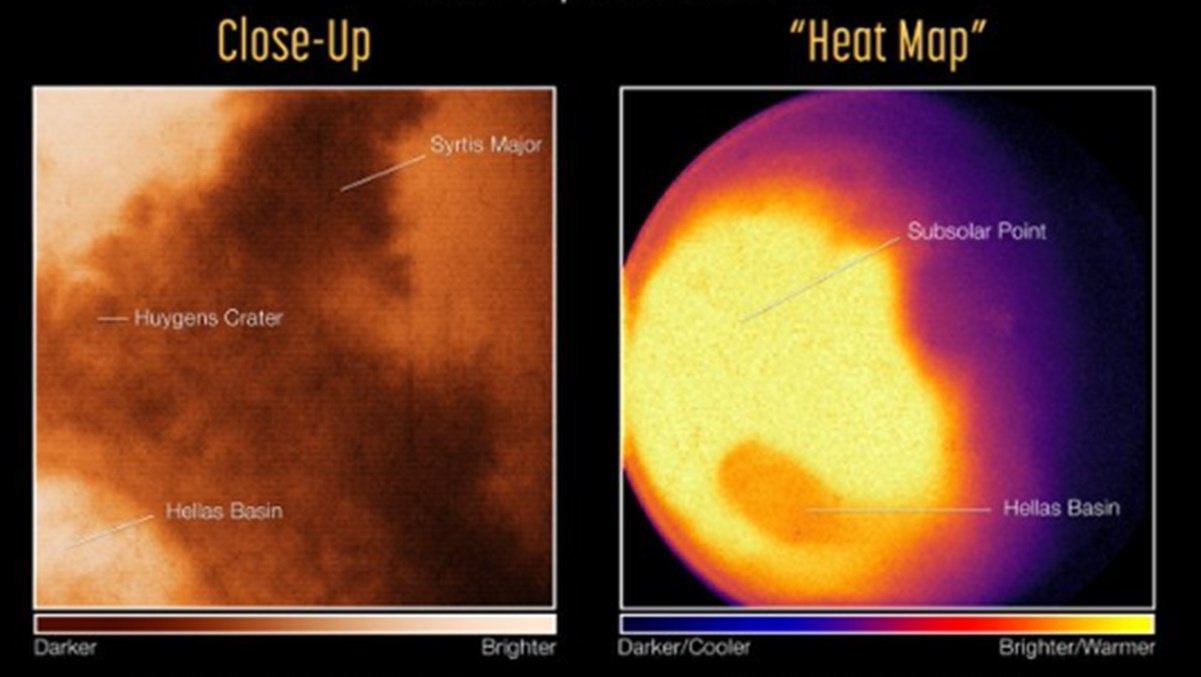Brand new The James Webb Space Telescope Their capture First pictures and spectrum tuesday A unique infrared-sensitive view of the Red Planet on September 5, 2022.
Webb’s unique observation post provides a view of Mars’ visible disk (part of the sunlit side facing the telescope) at a distance of nearly 1.5 million kilometers at the Sun-Earth Lagrange point 2 (L2).
As a result, Webb can capture images and spectra with the spectral resolution needed to study short-term phenomena such as dust storms, weather patterns, seasonal changes, and processes occurring at different times. day, sunset, sunrise and night) of a Tuesday.
read more: Will 19S earthquakes change the perception of science?, UNAM seismologist explains
Because it is so close, the Red Planet is one of the brightest objects in the night sky in terms of visible light (visible to the human eye) and infrared light designed to detect the Web. This poses special challenges for an observatory built to detect the faintest light from the universe’s most distant galaxies.
Webb’s instruments are so sensitive that without special observation techniques, bright infrared light from Mars will blind them, causing a phenomenon known as “detector saturation.” Astronomers adjusted for the extreme brightness of Mars by using very short exposures, measuring only a fraction of the light hitting the detectors, and using special data analysis techniques.
Webb’s first images of Mars, captured by the Near Infrared Camera (NIRCam), show part of the planet’s eastern hemisphere in two different wavelengths, or colors, of infrared light. This image shows the NASA surface reference map and the Mars Orbiter Laser Altimeter (MOLA) on the left, with both fields of view superimposed from the Webb NIRCam instrument. Webb’s near-infrared images are shown at right.
Webb’s first infrared spectrum of Mars, captured by the Near-Infrared Spectrograph (NIRSpec), demonstrates Webb’s potential for studying the Red Planet with spectroscopy.
read more: 19 S. New researches are needed to study the coincidence between 3 earthquakes: UNAM
Images of Mars show built-in differences in brightness across a large number of wavelengths from place to place across the planet at a given day and time. Overall. Astronomers will analyze features of the spectrum to gather more information about the planet’s surface and atmosphere.
In the future, Webb will use this spectroscopic and imaging data to investigate regional differences across the planet and trace trace species in the atmosphere, including methane and hydrogen chloride.
These observations of Mars were made as part of Webb’s Cycle 1 Guaranteed Time Observing (GTO) solar system project, led by Heidi Hammel of the Association of Universities for Research in Astronomy (AURA).


:quality(85)/cloudfront-us-east-1.images.arcpublishing.com/infobae/SMPW7M5BQFERBOQUPJXKCOKARY.jpg)
:quality(85)/cloudfront-us-east-1.images.arcpublishing.com/infobae/NP5NEZXMZFGNLBHNEQJHPJVMKM.jpg)

:quality(85)/cloudfront-us-east-1.images.arcpublishing.com/infobae/X7DZAL3I4REJTKPZ4Y4DYBHFMI.jpg)